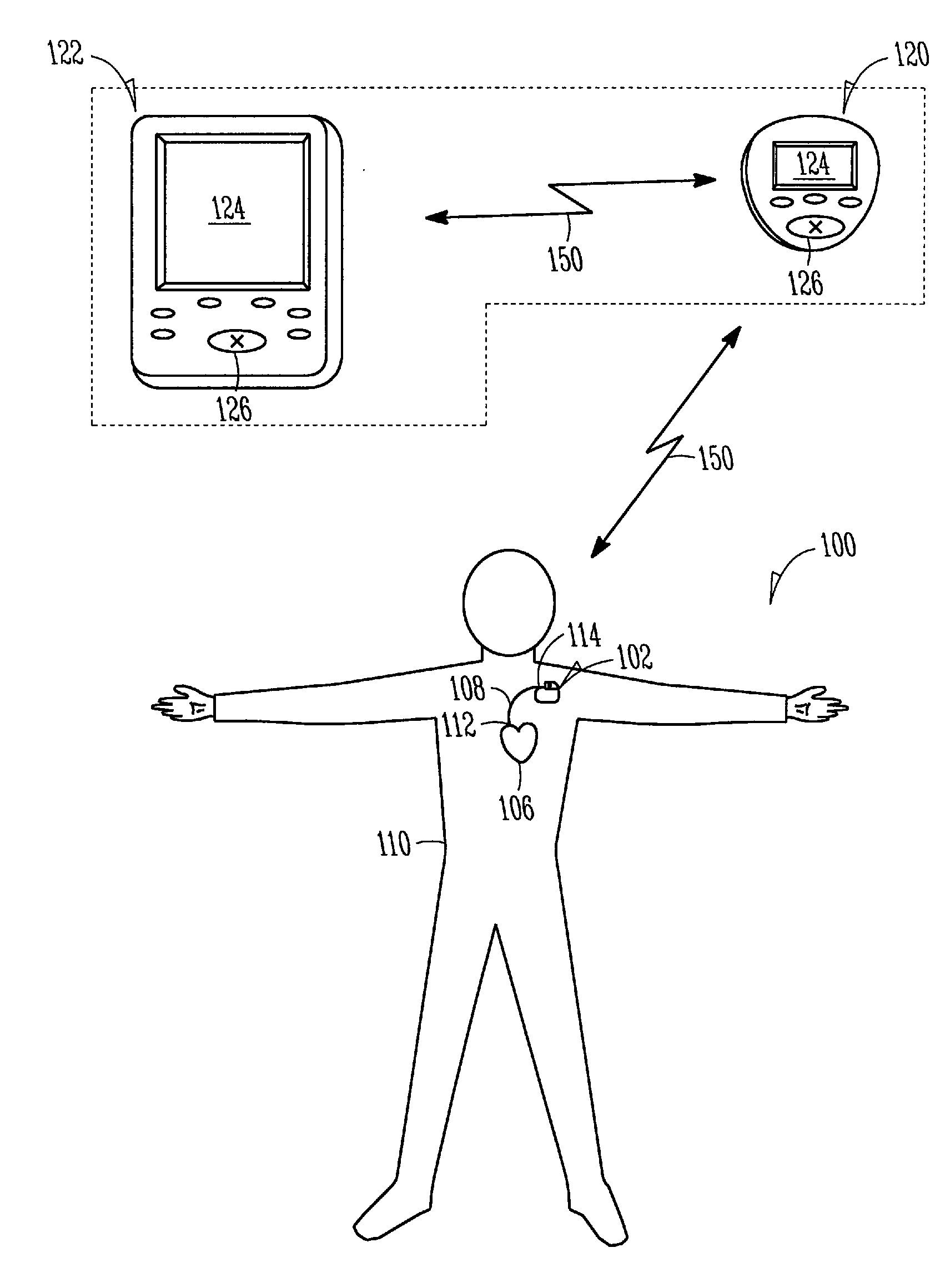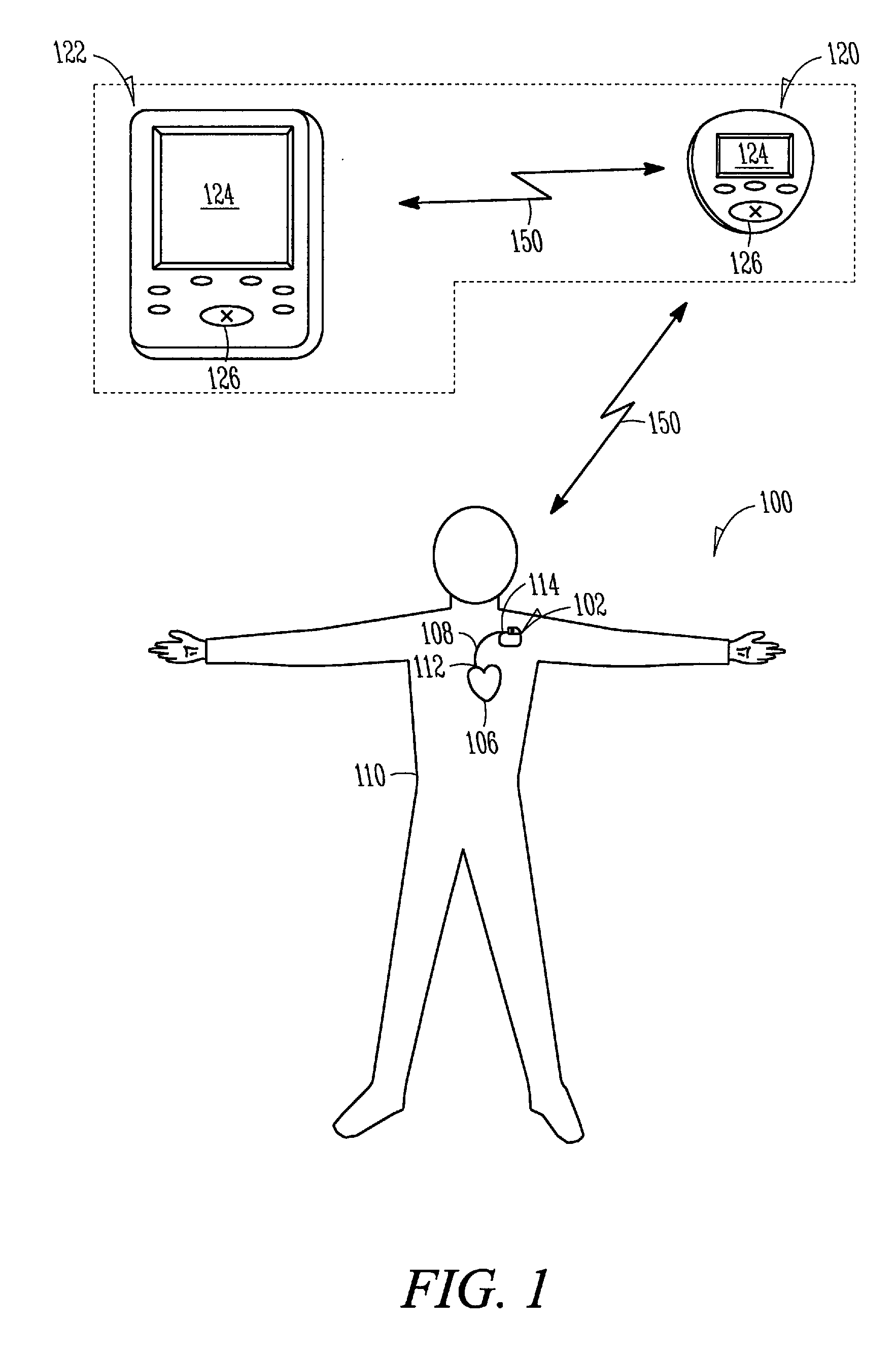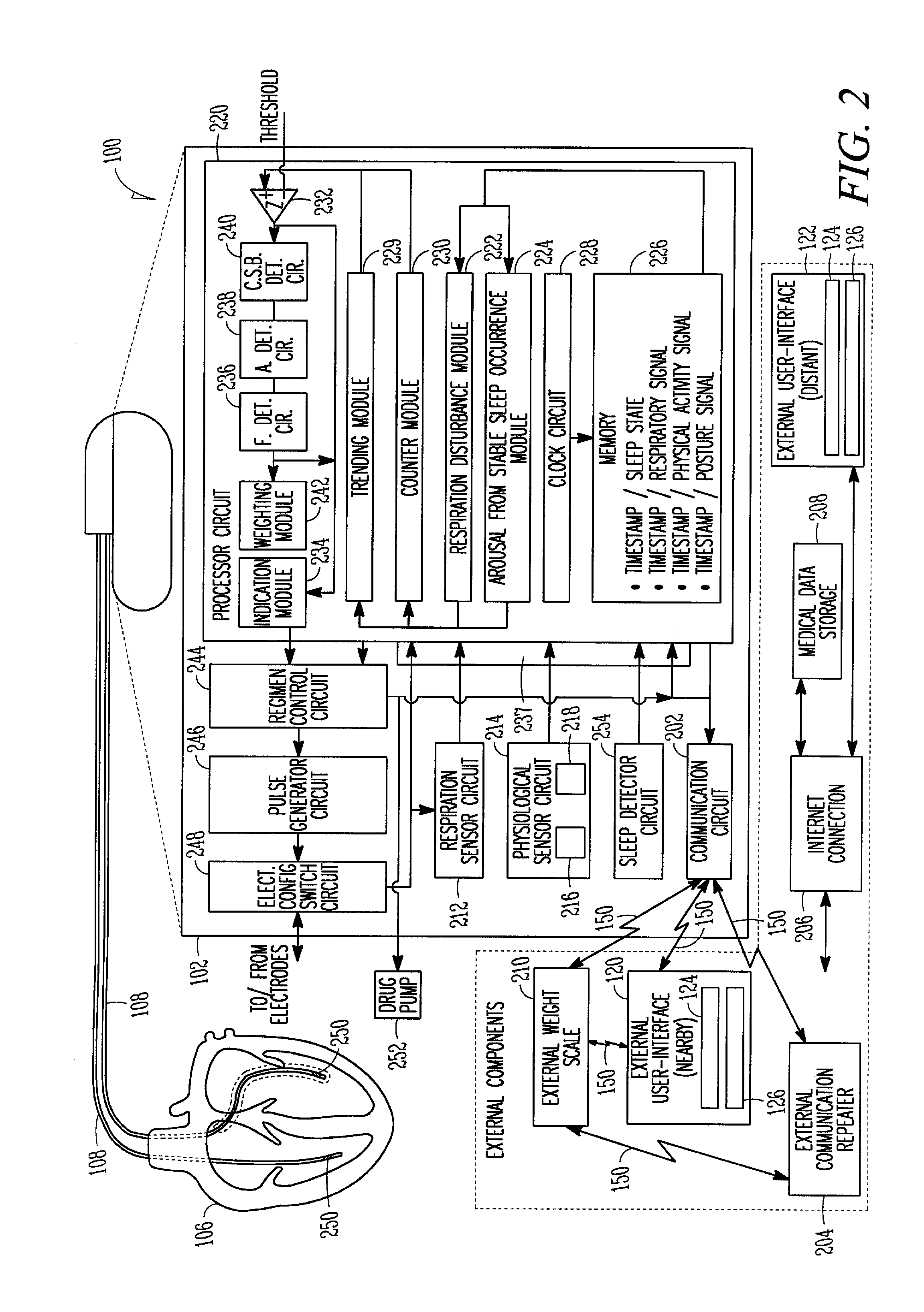Using respiration distress manifestations for heart failure detection
a heart failure and respiratory system technology, applied in the field of medical systems and methods, can solve problems such as poor cardiac output, swelling of legs, ankles, congestion in bodily tissues,
- Summary
- Abstract
- Description
- Claims
- Application Information
AI Technical Summary
Problems solved by technology
Method used
Image
Examples
examples
[0047]FIG. 1 is a schematic drawing illustrating generally, by way of example, but not by way of limitation, one embodiment of a system 100 and an environment in which the system 100 is used. In varying examples, the system 100 is configured for objectively diagnosing one or more respiration distress manifestations, such as one or more PND events, in a subject 110. The system 100 may further be configured for evaluating, such as trending or counting, over time the detected PND events for use, at least in part, as an indication of present or impending worsening heart failure or a stimulus for regimen (e.g., therapy) intervention. In some examples, the system 100 may be configured to determine an efficacy of the regimen intervention. In this way, present or impending worsening heart failure may be earlier detected and acted upon than is currently possible.
[0048]In FIG. 1, the system 100 includes an IMD 102, such as a CRM device, which is coupled via an electrode bearing lead 108 to a ...
PUM
 Login to View More
Login to View More Abstract
Description
Claims
Application Information
 Login to View More
Login to View More - R&D
- Intellectual Property
- Life Sciences
- Materials
- Tech Scout
- Unparalleled Data Quality
- Higher Quality Content
- 60% Fewer Hallucinations
Browse by: Latest US Patents, China's latest patents, Technical Efficacy Thesaurus, Application Domain, Technology Topic, Popular Technical Reports.
© 2025 PatSnap. All rights reserved.Legal|Privacy policy|Modern Slavery Act Transparency Statement|Sitemap|About US| Contact US: help@patsnap.com



